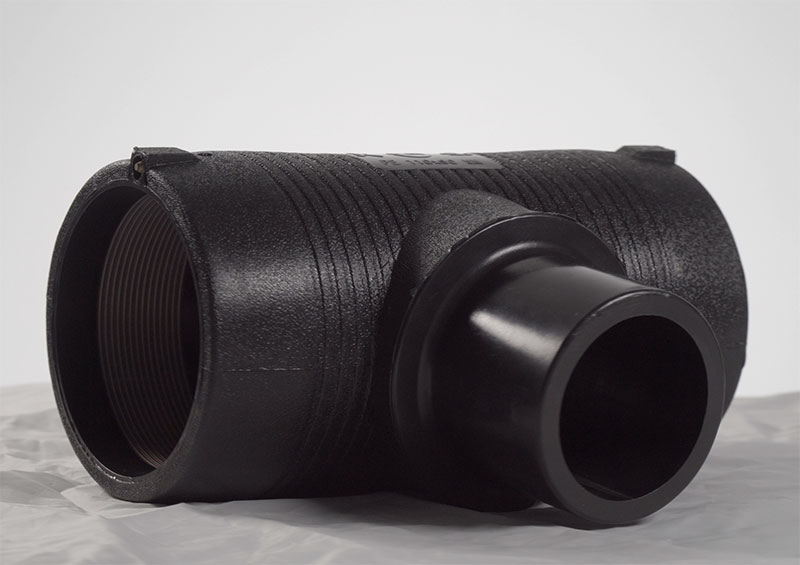What are the connection methods for polyethylene pressure pipes? The following follows the polyethylene composite pipe manufacturers to understand:
Hot melt connection
The hot-melt connection of polyethylene piping systems is hot-melt butt joint (including saddle connection) and hot-melt socket connection. The hot-melt socket connection is suitable for pipe fittings with relatively small diameter (generally diameter below DN63 mm), because the pipe wall of the pipe with small diameter is thinner and the cross section is small, and it is difficult to ensure the quality by docking. The hot melt butt joint is suitable for the pipe fittings with relatively large diameter, which is easier to manufacture than the material for the socket connection, and because the oxidized surface layer is cut before the welding, the welding pressure can be controlled, and the quality is easy to ensure. From the perspective of development trends, the use of hot melt docking is the mainstream.
Tests have shown that pipe fittings made of different grades of polyethylene pipe special materials (according to the standard {HotTag}, melt flow rate MFR is not much difference) can be hot-melt joints. However, because the domestically produced polyethylene pipe fittings often use materials that are not completely in line with the standard pipe materials, it is recommended to test and test when it is necessary to use different pipe brands and batches of polyethylene pipe fittings for hot-melt connection.
The process and equipment (tools) for the hot melt connection of polyethylene piping systems are relatively simple. In recent years, there have been many problems in the connection of polyethylene pipes in various places. Difficulties in the field are difficult to detect the quality of the hot melt connection (without breaking the connection). Foreign countries are exploring the use of ultrasonic testing for the quality of hot-melt connections, but the use of the site has not yet been popularized. At present, it is generally based on ‘visual inspection. The guarantee of stable quality of the hot melt connection is mainly based on strict compliance with the specified operating procedures (especially the three parameters of temperature, pressure and time are strictly controlled). It is recommended that the polyethylene pipe fittings manufacturer to develop a more detailed operation procedure suitable for the pipe fittings of the enterprise through tests and tests (in combination with the characteristics of the hot-melt joint equipment used) according to the relevant specifications (comparative principles). And through the training and consultation to help the builders master the operating procedures. Large companies that produce polyethylene piping systems internationally have these operating procedures that guide hot-melt connections. In the US PPI manual, a more practical quality control method is introduced: a test hot-melt joint is made on site every day, and the 'bend-belt test' (no destructive test of the equipment is required) to judge whether the process and equipment need to be adjusted.

Electrofusion connection
The fused connection includes an electrofusion socket connection and an fused saddle connection.
The outstanding advantages of fused connections are reliable quality (reducing human factors) and high construction efficiency. Because of the high technical requirements and high cost of electrofusion pipe fittings, the early application was mainly in gas pipe systems with smaller diameters. In recent years, with the advancement of technology, the application of electrofusion connections has become increasingly widespread. It is applied not only to water supply piping systems, drainage piping systems, but also to larger diameters (but the main market for electrofusion fittings is in the DN 20-250 mm diameter range).
There are two major categories from the technical route: one is to first wind the heating wire around the metal core rod of the mold or around the prefabricated polyethylene thin sleeve, and put it into the injection mold to be injected into the electrofusion tube embedded in the heating wire. . Among them, the electric heating wire is semi-buried (the metal wire is half exposed), the whole is embedded (the metal wire is not exposed), the electric heating wire is pre-coated with the polyethylene layer (the metal wire is not exposed) and other different designs (each has advantages and disadvantages); Automatic operation by robot, different degrees of automation for all manual operations or partial manual operations. The other is a process route that uses a first injection of polyethylene pipe fittings to machine the wiring.